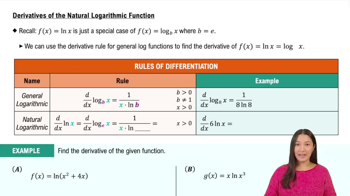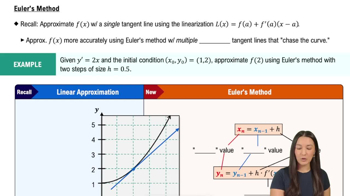Definite integrals Use a change of variables or Table 5.6 to evaluate the following definite integrals.
∫₋₁¹ (𝓍―1) (𝓍²―2𝓍)⁷ d𝓍
 Verified step by step guidance
Verified step by step guidance Verified video answer for a similar problem:
Verified video answer for a similar problem:



 8:38m
8:38mMaster Indefinite Integrals with a bite sized video explanation from Patrick
Start learning